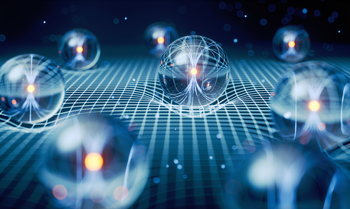The Quantum group studies quantum entanglement and its implications in field theories and many-body systems. In the presence of a macroscopic number of elementary constituents - as is the case in statistical physics, condensed matter, or fundamental field theories - quantum correlations can generate exotic collective phenomena whose understanding requires the development of new ideas and theoretical tools.
In this context, the research activities of the Quantum group follow two directions. The first one is motivated by experimental advances in the physics of cold atoms, which have made it possible to observe new collective quantum behavior, making it urgent to develop new computational techniques and effective theories, especially in low dimensionality.
The second research direction is motivated by the fact that new experimental possibilities have facilitated the implementation of quantum computers and simulators with a large number of elementary components (qubits). Current prototypes of quantum computers are far from ideal, and theoretical effort is required both for understanding the physics of the quantum platforms used and for developing algorithms for current prototypes.
Finally, taking into account the social impact of quantum technologies, the Quantum group is also collaborating on teaching quantum physics at the high school and university levels.
